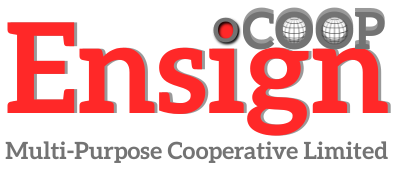How We Invest Our Profits
Ensign Cooperative has several options for using surplus or profits, and the decision usually reflects the organization’s values, goals, and the needs of its members. Here’s how We might allocate our surplus:
1. Paying Dividends to Members
- How: Ensign may distribute a portion of the surplus as dividends to its members. Dividends can be based on:
- Patronage: Dividends are distributed according to the level of each member’s participation in the co-op, such as the amount of goods or services they purchased or contributed.
- Investment: If members have invested capital in the co-op, dividends might be paid based on the amount of capital each member has invested.
- Impact: Paying dividends rewards members for their participation or investment in the co-op, reinforcing their commitment and loyalty.
2. Reinvesting in the Business
- How: A portion of the surplus can be reinvested into the business to support growth, improve services, or expand operations. This could include:
- Upgrading facilities or technology.
- Expanding product or service offerings.
- Hiring more staff or providing additional training.
- Impact: Reinvestment helps the co-op remain competitive, improve efficiency, and expand its impact, benefiting all members in the long term.
3. Building Reserves
- How: Allocating surplus to reserves strengthens the co-op’s financial stability and prepares it for future uncertainties, such as economic downturns, unexpected expenses, or expansion opportunities.
- Impact: A healthy reserve fund ensures the co-op can weather difficult times without compromising operations or member benefits, providing long-term security for the organization and its members.
4. Supporting Member Services
- How: Surplus funds can be used to enhance services provided to members, such as:
- Offering education and training programs.
- Providing discounts on products or services.
- Enhancing member benefits, such as health insurance or retirement plans.
- Impact: Investing in member services strengthens the value proposition of the co-op, improves member satisfaction, and supports personal and professional development.
5. Funding Community Projects
- How: The co-op can allocate a portion of the surplus to fund community development projects, such as:
- Supporting local schools, healthcare facilities, or infrastructure projects.
- Funding environmental initiatives, like tree planting or clean energy projects.
- Donating to local charities or social causes.
- Impact: By investing in the community, the co-op builds goodwill, strengthens its ties to the local area, and contributes to the social and economic development of the community.
6. Creating an Innovation Fund
- How: Establish a fund dedicated to innovation and research, allowing the co-op to explore new business opportunities, develop new products or services, or improve operational efficiency.
- Impact: An innovation fund ensures the co-op can adapt to changing market conditions, stay competitive, and lead in sustainable practices or technology.
7. Reducing Prices or Fees for Members
- How: The co-op may choose to use the surplus to reduce the prices of its products or services for members or lower membership fees.
- Impact: Lower prices or fees directly benefit members, making the co-op’s offerings more affordable and accessible, which can also attract new members.
8. Creating a Social Fund
- How: A portion of the surplus can be allocated to a social fund that supports members in times of need, such as:
- Providing emergency financial assistance to members facing hardships.
- Offering grants or loans to members for personal or business development.
- Impact: A social fund strengthens the sense of community and mutual support within the co-op, helping members in difficult times.
9. Investing in Environmental Sustainability
- How: Surplus funds can be directed toward sustainability initiatives within the co-op, such as:
- Installing renewable energy systems.
- Reducing the co-op’s carbon footprint.
- Implementing waste reduction or recycling programs.
- Impact: Investing in sustainability helps the co-op reduce its environmental impact, meet regulatory requirements, and appeal to environmentally conscious members.
10. Allocating to Member Education and Advocacy
- How: Funds can be used to educate members about the co-op model, their rights and responsibilities, and broader social or economic issues. It can also support advocacy efforts for policies that benefit cooperatives and their members.
- Impact: Educated members are more engaged and capable of contributing to the co-op’s success, and advocacy efforts can help shape a favourable environment for cooperatives.
The allocation of surplus is typically decided by the members, either through a vote at the Annual General Meeting or through the Board of Directors based on guidelines set by the membership. This democratic approach ensures that surplus funds are used in a way that aligns with the collective values and goals of Ensign Co-operative.
